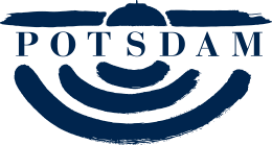After leaving the Brandenburg state capital of Potsdam, the traveler taking the major B2 road to the north will arrive to the point where the three lakes of the Havel river meet: the Jungfernsee, Lehnitzsee, and Weißer See lakes. This is the beginning of the Neu Fahrland district. In the west, the district is bordered by the Fahrländer See lake, and to the east by the Krampnitzsee lake, thus being a Five-Lakes district which is almost completely surrounded by the waters.
Beech and mixed woodland grow throughout large parts of the territory criss-crossed by a dense system of hiking trails. Kirchberg Hill is the highest point of the entire neighbouring region, reaching 85 meters above the average sea level, giving a relative height here of about 35 meters. This plenitude of forests and waters makes the Neu Fahrland landscape into a pearl of the Havelland region.
Today, there are little more than 1,200 people living in Neu Fahrland, which is some 250 more than it was 8 years ago. Since the German reunification, known colloquially as the 'Big Change,' the area has experienced a burst of building activity - many detached and multi-family homes were built, partly for new residents coming from Potsdam or Berlin, but also for old-established Neu Fahrlanders.
In 1952, Neu Fahrland opened a sanatorium. The Heinrich Heine Clinic belongs to the Ebel Specialized Clinics Group and offers its patients the optimum conditions for convalescence and relaxation in Neu Fahrland.
Neu Fahrland is linked-in with a dense network of public transportation. In only 15 minutes by bus you can be in the center of Potsdam to see its multitude of tourist attractions, take advantage of the shopping opportunities, or to enjoy a meal or drink in one of the many restaurants. You can see more of the beautiful Brandenburg landscape by train, bus, or a cruise steamship. The south-western area of Berlin can also be reached by bus within only 30 minutes.
In the course of the regional re-organization the municipality of Neu Fahrland became a district of Potsdam in October 2003. Neu Fahrland, which was first mentioned in 1894 in Fahrland's historic document as 'Kolonie Neu Fahrland' (settlement), had already been a part of Potsdam in the past - in 1939, it was joined to the city of Potsdam. The East German Republic (GDR) law on re-organization rescinded that allocation in 1952. You can read more about its history in the chronicle entitled 'Neu Fahrland - Von den Wenden bis zur Wende' ('From the Sorbs to the Big Change', i.e. from the original Slavonic peoples up to the re-unification), which was issued in 2003 in German. Visitors to Neu Fahrland with a special interest in history can find descriptions in the publication of the historically, as well as architecturally-interesting buildings. This includes the two bridges and the former residence of the "Fährmüllers" (ferrymen family), which was built by Persius at the Nordbrücke bridge (B2), the Adlon and the Sigismund manor houses along what is today's "Am Lehnitzsee" street, as well as the Siemens mansion, which is in the middle of a large 12-hectare park.
For leisure-time activities, numerous possibilities are offered, ranging from the Culture and Sports Club 2000 within its various sections, the volunteer fire-fighters, a club for seniors and handicapped, the Kinderland kindergarten, with its own supporting organization and an anglers club.
